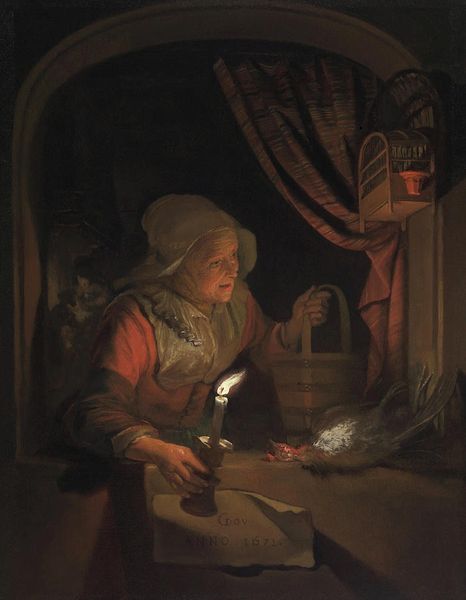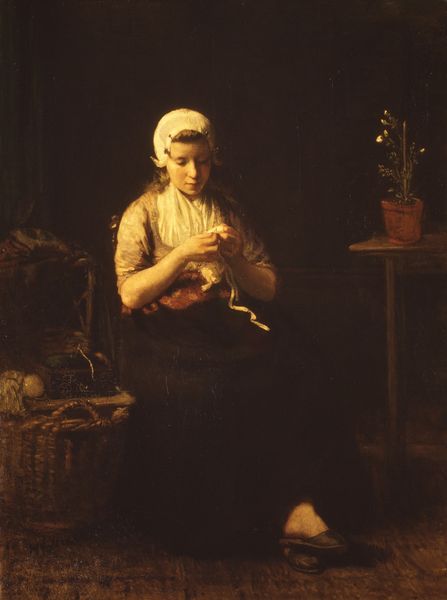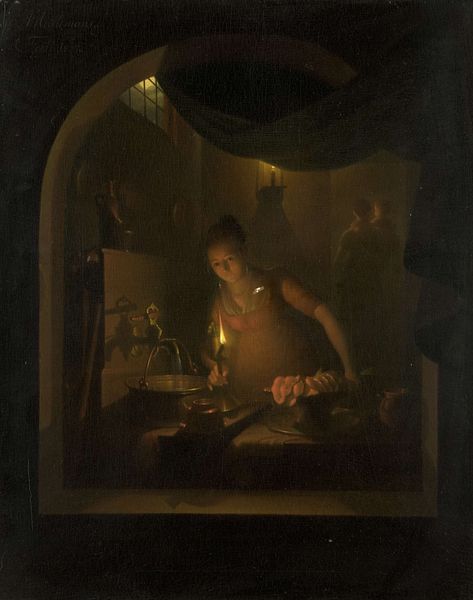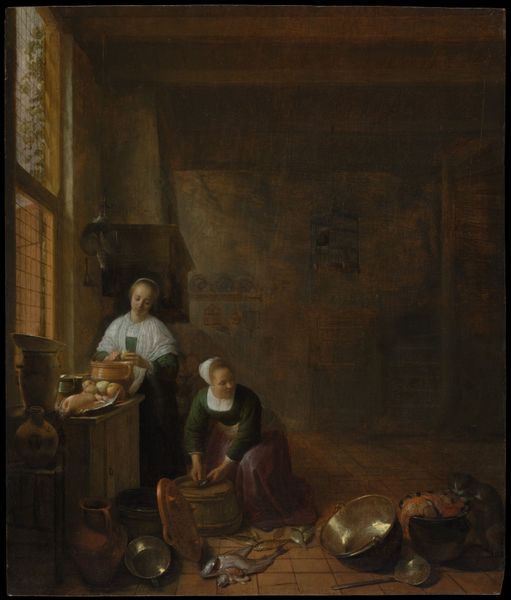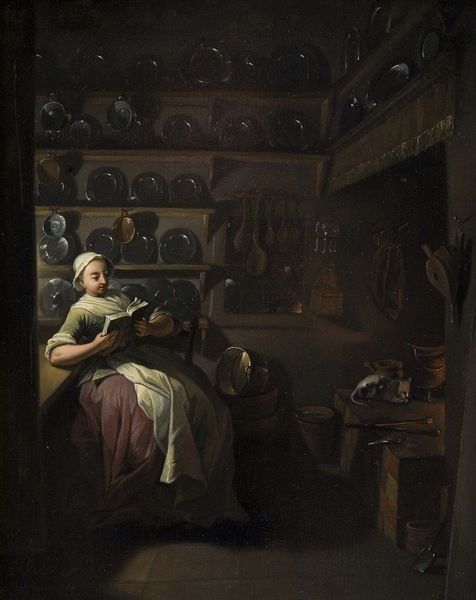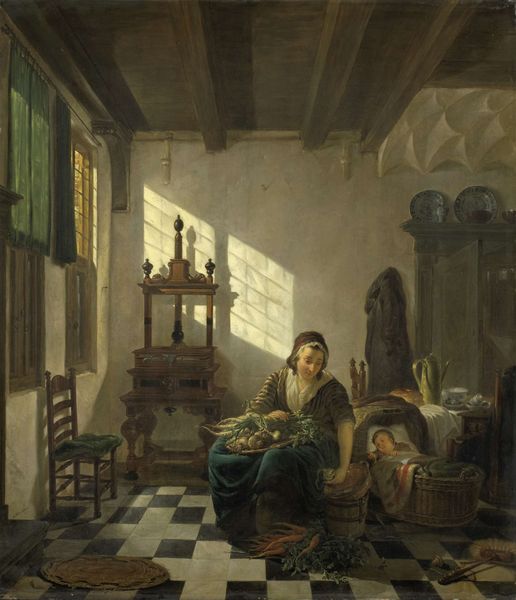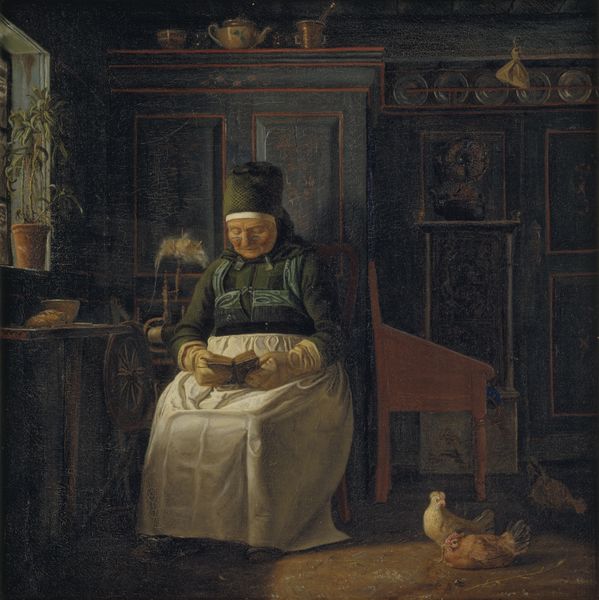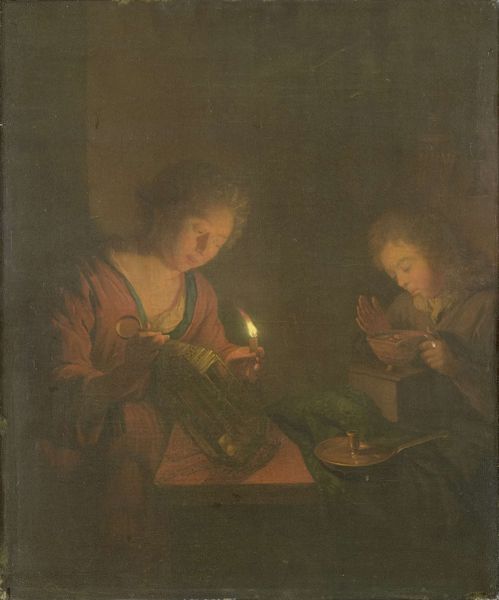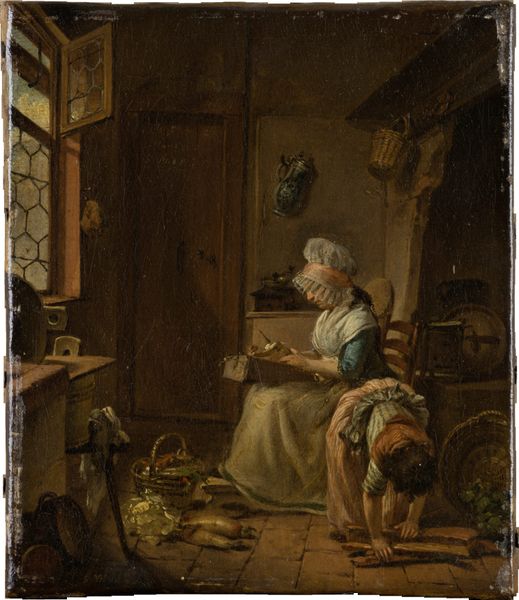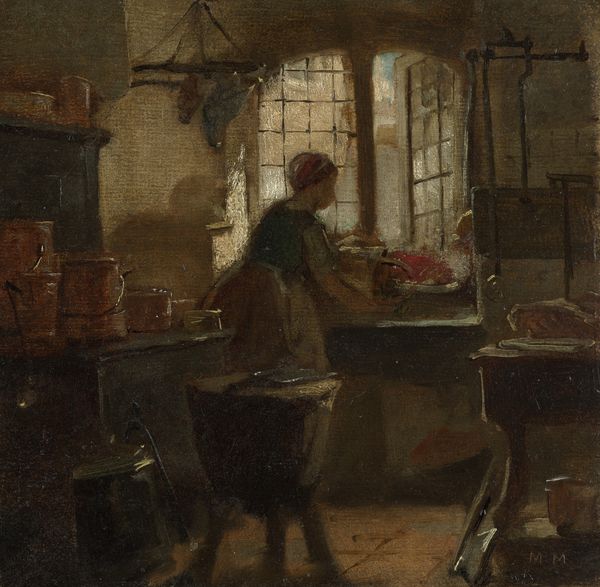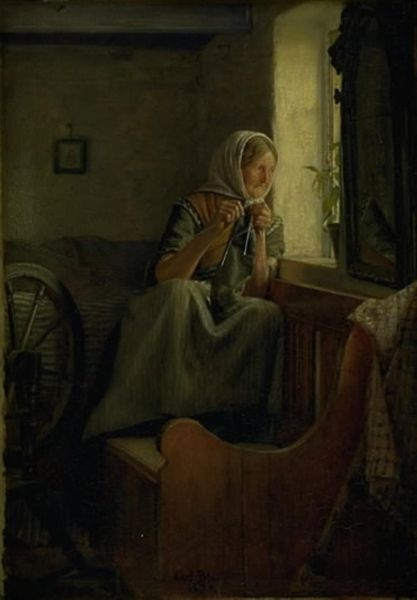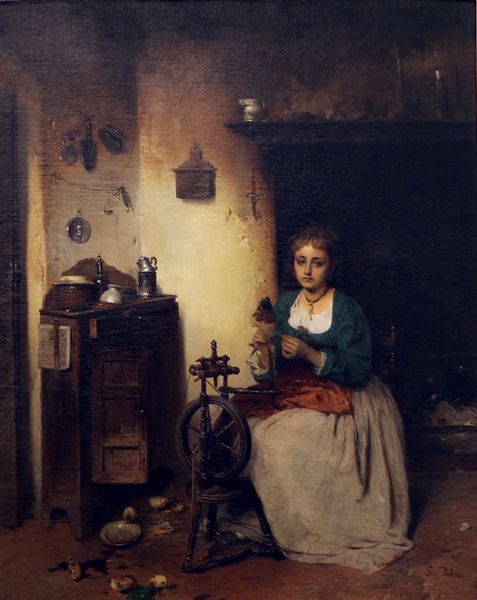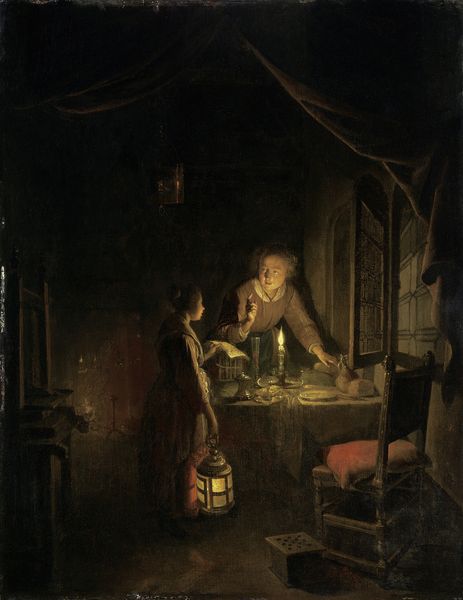
Dimensions: height 49 cm, width 43 cm, depth 11.5 cm
Copyright: Rijks Museum: Open Domain
Curator: This is “A Woman in a Kitchen by Candlelight,” painted around 1830 by Michiel Versteegh. It hangs here at the Rijksmuseum. Editor: Mmm, quiet. That’s the first word that comes to mind. And domestic. It feels like stepping into a hushed interior, bathed in the glow of a single candle. Very Vermeer. Curator: Yes, and light is absolutely key to its meaning. The candle illuminates the woman, but it also hints at the labor often unseen. There’s a real honesty to the representation, especially compared to the Rococo ideals still lingering at the time. Editor: Honesty…that’s a good word. The light feels less theatrical than you sometimes get in candlelight scenes; it’s not about drama, but the everyday. The painting draws on an earlier historical mode of painting known as genre painting. Like these intimate scenes of daily life became very popular, didn't they? Curator: Precisely. And yet Versteegh complicates it. He imbues a relatively mundane subject—a woman perhaps preparing a meal—with the dignity we often associate with history paintings. Genre scenes could provide commentary on social dynamics and even express national values, and he's making something noble and universal of domesticity. Note how carefully he paints the objects: the copperware, the hanging utensils…these aren't just props. Editor: I'm immediately curious about what she is lifting in the painting—almost like a golden basket, reflecting a small light of candlelight across the space. The Rococo sensibility comes through though in how she engages with us directly. Curator: That’s interesting you note her engagement with the viewer; it defies easy categorization. I also see in this work how older aesthetic movements are informing a modern moment—the use of shadow is both aesthetically powerful, yet speaks to something deeper in the scene. There's mystery despite its familiar domestic scene. It evokes psychological insight despite not depicting a traditional portrait. Editor: Ultimately though, it comes back to that gentle light, doesn’t it? It pulls me in close and suggests even beyond what is pictured in this very frame. Curator: Indeed. And through this simple yet affecting image, Versteegh allows us to reflect on the often unseen beauty of ordinary life.
Comments
No comments
Be the first to comment and join the conversation on the ultimate creative platform.
